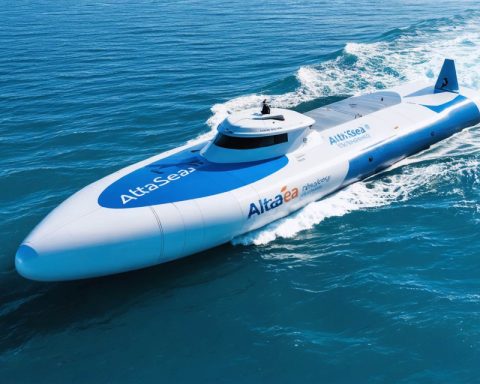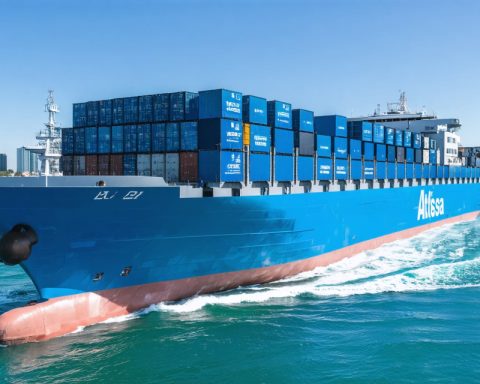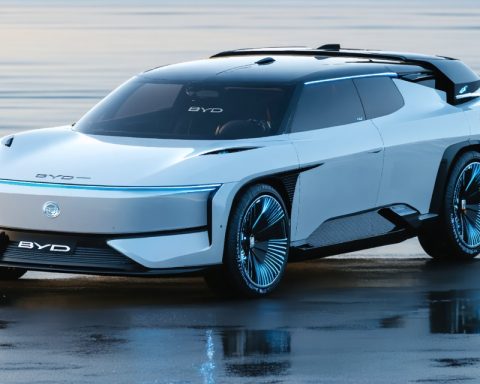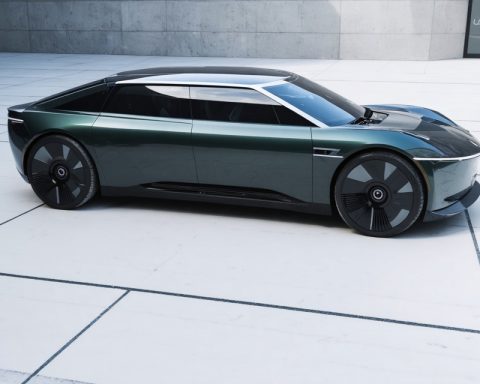- Toyota shifts focus from hydrogen-powered sedans to industrial applications.
- The company unveils a third-generation fuel cell system designed for commercial use.
- This new system offers double the output of previous models, while maintaining the same size.
- Hydrogen fuel cells prove advantageous in heavy-duty sectors like transportation and construction.
- Hydrogen’s efficiency and endurance make it ideal for trucks, trains, and ships over electric vehicles.
- Toyota’s pivot highlights the potential of hydrogen where sustainable solutions are most needed.
Against the backdrop of whirring electric motors and the gradual hum of a battery-powered future, Toyota has pursued a different whisper—a hydrogen future. Yet, the tide of time and technology has nudged the automaker to a fresh horizon, and today, the company’s latest announcement marks a subtle pivot towards a sector where hydrogen can truly shine.
Picture this: a third-generation fuel cell system, not under the hood of sleek sedans, but robustly integrated into the world’s industrial muscle. Toyota reveals this formidable hardware, tailored to the unique demands of commercial industries, with a promise of durability rivaling that of a faithful diesel engine. Streamlined and potent, the system doubles its predecessor’s output while nestled comfortably within the same space.
Toyota’s foresight lies in its acknowledgment that while electric vehicles zip ahead in popularity, hydrogen finds its sanctuary where efficiency meets endurance. Consider those heavyweight champions of the transportation and construction sectors—trucks, trains, and ships, ladened by the burden of bulky batteries, now find solace in light yet powerful hydrogen fuel cells. These cells not only thrive on less but persist with greater force, granting them immunity from the infrastructure obstacles that stymied hydrogen cars like Toyota’s own Mirai.
The takeaway? Hydrogen may not steer personal vehicles anytime soon, but it is poised to power the giants that build and sustain our world. Toyota’s quiet recalibration hints at a broader truth: sometimes, the soundest innovations find their place where they are needed the most. Here, amidst the clamor for sustainability, hydrogen stakes its claim under the sun.
The Future of Hydrogen: Toyota’s Strategic Shift to Powering Industry Giants
How Hydrogen Fuel Cells Are Changing Industrial Heavyweights
In recent years, Toyota has strategically pivoted from promoting hydrogen for consumer vehicles to harnessing its potential for the industrial sector. This transition is marked by the unveiling of their third-generation fuel cell system, specifically designed to meet the robust demands of commercial industries, such as transportation, construction, and maritime operations.
How-To Steps & Life Hacks: Integrating Hydrogen Fuel Cells
1. Choose the Right Application: Assess whether hydrogen fuel cells are right for your industry. Ideal use cases include long-haul trucking, rail transport, and marine applications where the efficiency of hydrogen can outshine electric batteries.
2. Understand the Infrastructure: Set up or partner with fueling stations that can support hydrogen. Explore locations where hydrogen sources are available or consider on-site hydrogen production.
3. Leverage Existing Systems: Given that Toyota’s new system doubles the previous output within the same space, utilize their compact design to retrofit existing diesel-based machinery without extensive modification.
4. Focus on Education and Training: Train operators and maintenance staff on the new technology to ensure seamless transition and maintenance.
Real-World Use Cases
– Long-Haul Trucks: Companies like Nikola and Hyzon Motors have already begun implementing hydrogen fuel cells in their fleets, achieving faster refuel times compared to electric trucks.
– Rail Transport: Alstom’s hydrogen trains in Germany have proven to be a successful alternative to diesel, offering a quieter and emission-free ride.
– Maritime Sector: Norway’s Green Jade ship exemplifies hydrogen’s potential to fuel seafaring vessels.
Market Forecasts & Industry Trends
The global hydrogen fuel cell market is projected to grow to $42 billion by 2026, driven largely by increasing environmental regulations and desire for clean energy alternatives (Research and Markets). As governments worldwide push for carbon neutrality, industries may find hydrogen an essential component in their sustainability strategies.
Reviews & Comparisons
– Efficiency and Range: Hydrogen cells offer a longer range and quicker refueling time compared to electric batteries, making them advantageous for heavy-duty applications.
– Cost and Maintenance: While initial costs are higher, the durability and minimal refueling infrastructure required over time can present cost efficiencies.
Controversies & Limitations
– Insufficient Infrastructure: Limited refueling stations and production challenges have hindered widespread adoption.
– Expensive Production Costs: Current methods of hydrogen production are still costly and often not environmentally friendly.
Security & Sustainability
With an increase in hydrogen production from renewable sources, there is potential for a significant reduction in carbon emissions globally. Transitioning to green hydrogen production could further enhance its sustainability profile.
Insights & Predictions
Experts suggest that as technology advances, hydrogen will become a critical component in the industrial decarbonization process. Toyota’s focus on heavy industry could lead to breakthroughs that make hydrogen a more viable solution across various applications.
Pros & Cons Overview
Pros:
– Increased power output and efficiency for heavy-duty applications.
– Rapid refueling capabilities.
Cons:
– Initial higher costs and limited refueling infrastructure.
– Dependence on advancements in green hydrogen production to improve sustainability.
Quick Tips for Industrial Adoption
– Collaborate with technology leaders to co-develop solutions tailored to specific industrial needs.
– Invest in partnerships that expand the hydrogen infrastructure network.
– Monitor technological advancements that can reduce costs and increase production efficiency.
For more on Toyota’s advancements in hydrogen technology, visit their official Toyota site.














